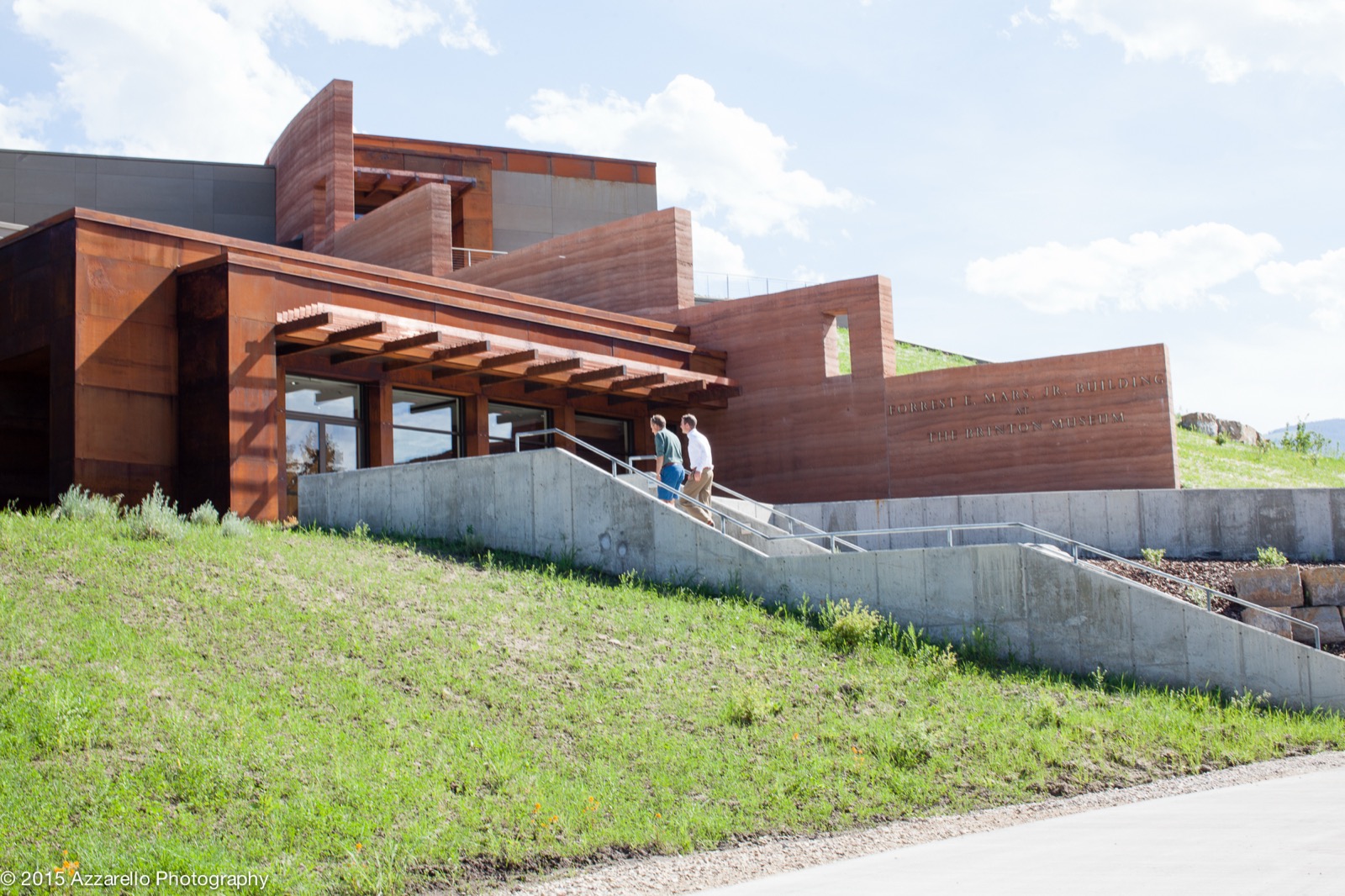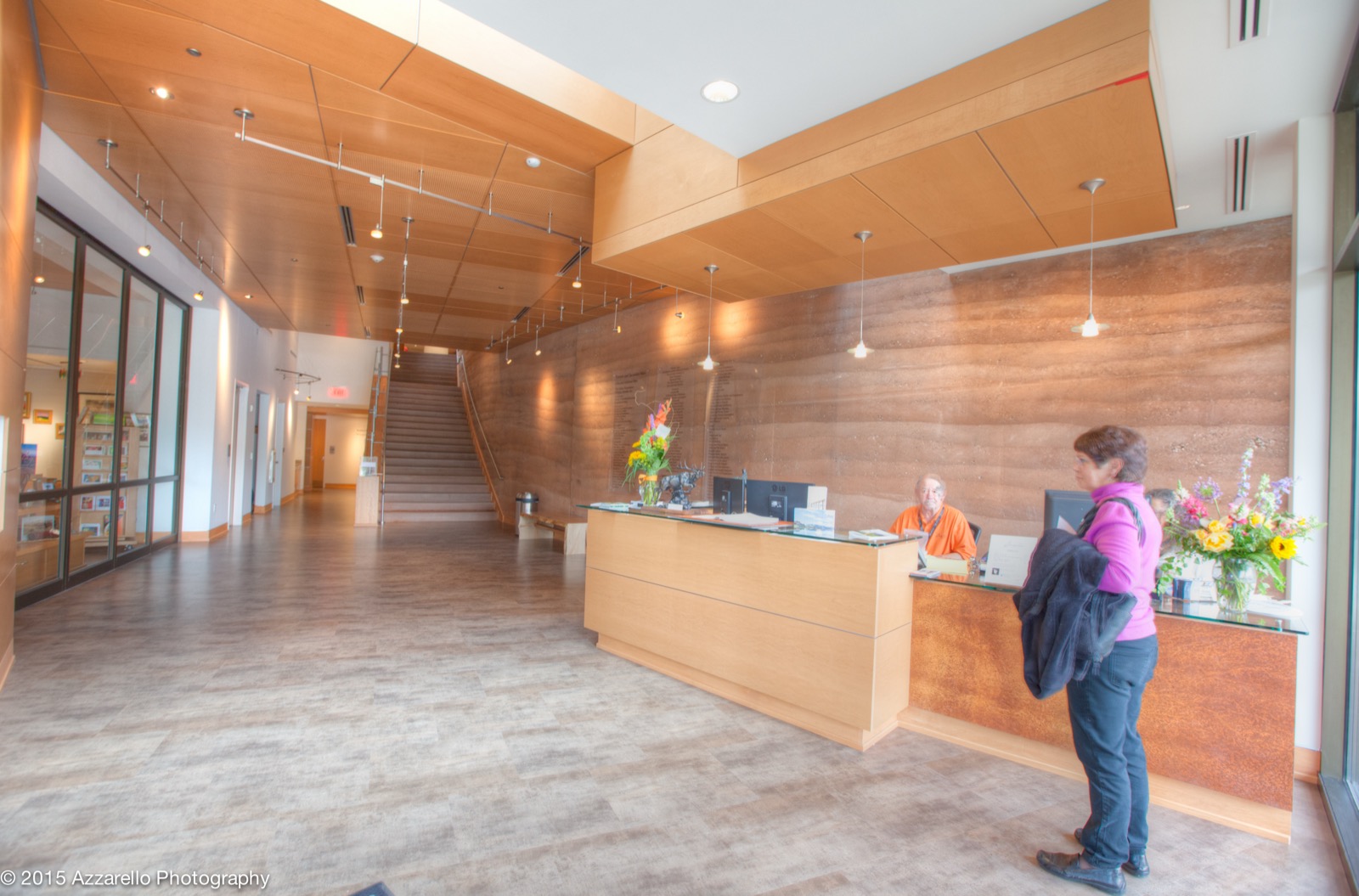


The 51′ tall Museum is largely buried into a foothill of the Rockies. The gently curving S-shaped SIREWALL spine runs through the center of the building and acts to moderate temperature and humidity. The single colour variegated sedimentary appearance is similar to much of Wyoming’s exposed geology, which is abundantly evident as one drives through the State. Patrons of the museum go up and down stairs along the SIREWALLs, pass through door openings in the SIREWALL, and are almost always in visual contact with the spine. From near the top of the first flight of stairs one can look up through a skylight and appreciate what 51′ tall SIREWALLs feel like. This experience of vertical scale is in sharp contrast to the understated scale of the building (that is largely buried and relatively invisible).
